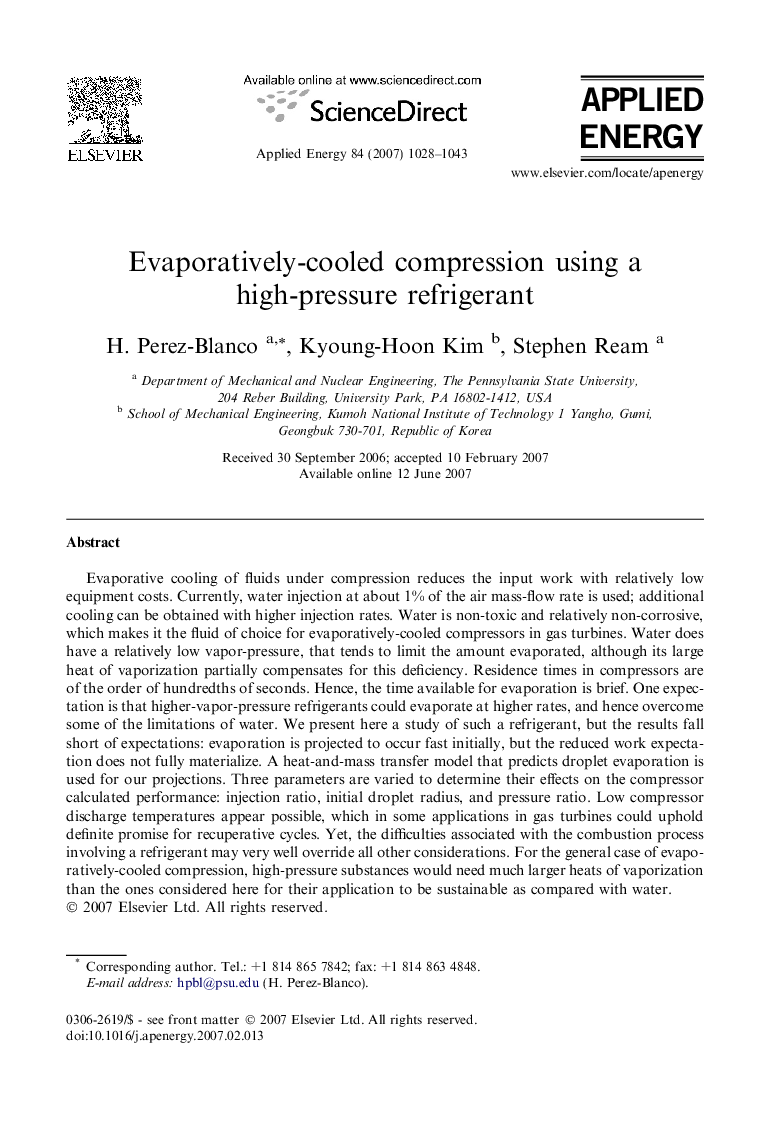| Article ID | Journal | Published Year | Pages | File Type |
|---|---|---|---|---|
| 245377 | Applied Energy | 2007 | 16 Pages |
Evaporative cooling of fluids under compression reduces the input work with relatively low equipment costs. Currently, water injection at about 1% of the air mass-flow rate is used; additional cooling can be obtained with higher injection rates. Water is non-toxic and relatively non-corrosive, which makes it the fluid of choice for evaporatively-cooled compressors in gas turbines. Water does have a relatively low vapor-pressure, that tends to limit the amount evaporated, although its large heat of vaporization partially compensates for this deficiency. Residence times in compressors are of the order of hundredths of seconds. Hence, the time available for evaporation is brief. One expectation is that higher-vapor-pressure refrigerants could evaporate at higher rates, and hence overcome some of the limitations of water. We present here a study of such a refrigerant, but the results fall short of expectations: evaporation is projected to occur fast initially, but the reduced work expectation does not fully materialize. A heat-and-mass transfer model that predicts droplet evaporation is used for our projections. Three parameters are varied to determine their effects on the compressor calculated performance: injection ratio, initial droplet radius, and pressure ratio. Low compressor discharge temperatures appear possible, which in some applications in gas turbines could uphold definite promise for recuperative cycles. Yet, the difficulties associated with the combustion process involving a refrigerant may very well override all other considerations. For the general case of evaporatively-cooled compression, high-pressure substances would need much larger heats of vaporization than the ones considered here for their application to be sustainable as compared with water.
